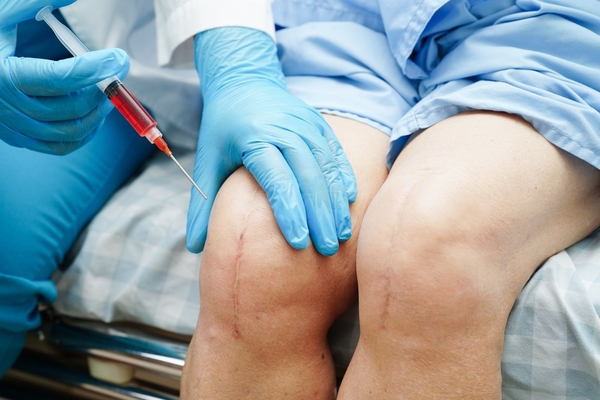Joint pain, especially in the knees, can significantly impact daily life, limiting mobility and causing discomfort. In the UK, many individuals seek effective treatments like Platelet-Rich Plasma or PRP for knee osteoarthritis to alleviate symptoms and improve their quality of life.
What is PRP Therapy?
Platelet-rich plasma (PRP) therapy is a non-surgical treatment that utilizes the patient's own blood to promote healing and joint pain relief in the UK and anywhere else. The process involves extracting a small amount of blood from the patient, typically from the arm, and spinning it in a centrifuge to separate the platelets from other blood components.
How PRP Helps with Knee Osteoarthritis
PRP contains a concentrated amount of platelets, growth factors, and cytokines that are crucial for tissue regeneration and healing. When injected into the knee joint affected by osteoarthritis, PRP promotes:
Reduced Inflammation
The growth factors in PRP help to reduce inflammation in the knee joint, which is a common source of pain for osteoarthritis patients.
Pain Relief
PRP injections have shown promise in providing pain relief by stimulating the natural healing process and reducing the severity of osteoarthritis symptoms.
Improved Joint Function
Patients often experience improved joint function and mobility after PRP therapy, as the injections aid in repairing damaged tissues and promoting overall joint health.
The Procedure
PRP for knee osteoarthritis is typically performed as an outpatient procedure. Here’s what patients can expect:
Blood Draw: A small amount of blood (usually around 30-60 milliliters) is drawn from the patient's arm.
Centrifugation: The blood is then placed in a centrifuge machine, where it is spun at high speeds to separate the platelets and growth factors from other blood components.
Injection: Once the PRP is prepared, it is carefully injected into the knee joint under ultrasound guidance for accuracy.
Benefits of PRP over Traditional Treatments
PRP therapy offers a nonsurgical approach with natural healing properties. Compared to invasive surgeries, it reduces risks and recovery time. Many patients experience long-lasting pain relief and improved joint function.
Non-surgical Approach: Unlike invasive surgical procedures, PRP therapy offers a non-surgical alternative for treating knee osteoarthritis, reducing risks and recovery time.
Natural Healing: PRP utilizes the body's own healing mechanisms, making it a natural and well-tolerated treatment option for many patients.
Long-lasting Relief: While individual results may vary, many patients report long-lasting pain relief and improved joint function following PRP therapy sessions.
Is PRP Right for You?
PRP therapy may be suitable for individuals experiencing mild to moderate knee osteoarthritis symptoms who have not responded well to conservative treatments like medications and physical therapy.
It’s important to consult with a qualified healthcare provider to determine if PRP is an appropriate treatment option based on your specific medical history and condition severity.
The End Note
PRP therapy offers promising benefits for individuals seeking joint pain relief in the UK from knee osteoarthritis. By harnessing the body's natural healing abilities, PRP injections can reduce inflammation, alleviate pain, and improve joint function without the need for invasive surgery.
If you're considering PRP therapy for knee osteoarthritis, consult with a healthcare provider to discuss whether this treatment option aligns with your health goals and needs.



